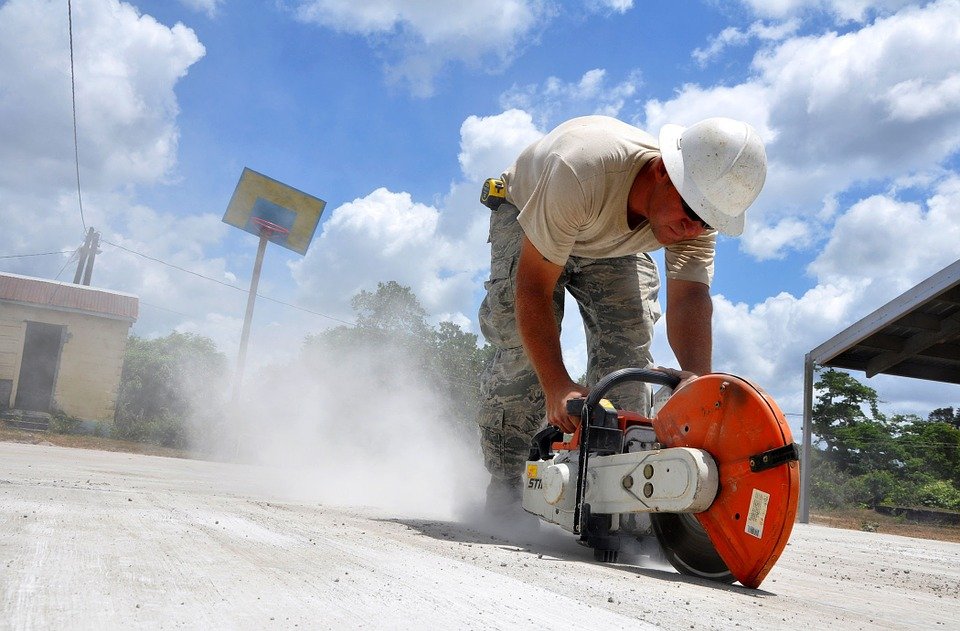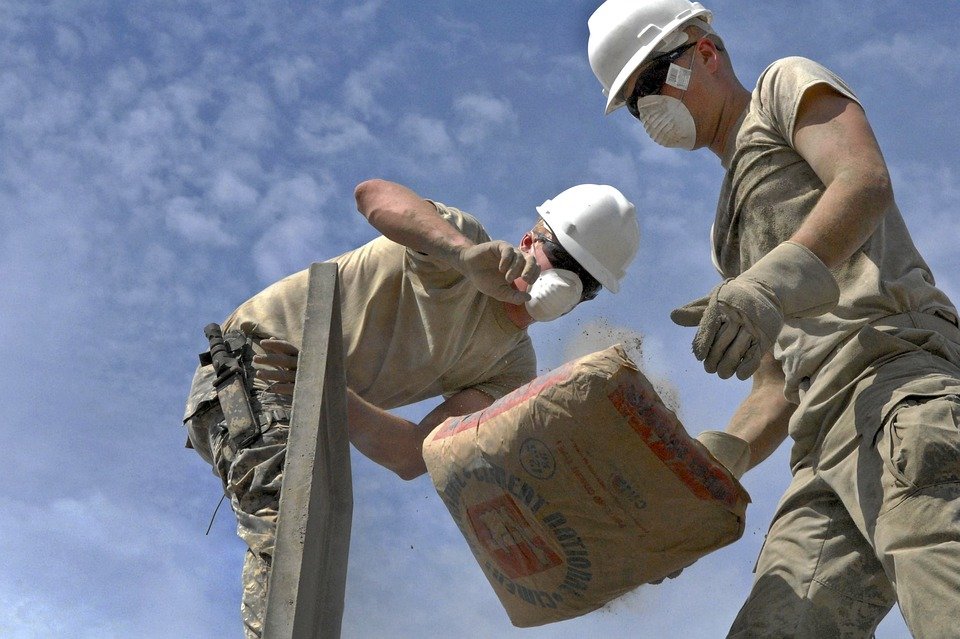
Occupational hygienist Kelvin Williams takes a closer look at silica. This article was published in September 2016.
How is it, that in 2016, campaigns have been launched to tackle the earliest recorded occupational disease? Silicosis was mentioned by Hippocrates around 400BC and yet here we are in the UK, over 2000 years later, with estimations of 500 deaths every year caused by respirable crystalline silica (RCS) exposure in the construction industry and 800 people a year dying from lung cancer caused by exposure to RCS dust at work. I think one of the answers to this question will be familiar to anyone working in the public health field.
It’s very difficult to instil in workers a respect for a hazard that, as far as they are concerned, doesn’t appear to do any harm. This is the curse of “latency”. It can take many years for RCS dust exposure to cause disease so, for today, a worker will take a chance with dust exposure and believe he’s got away with it. Any public health professional will tell you that people tend not to take health messages seriously because they don’t think the worst will happen to them, at least any time soon. If you eat a bar of chocolate for lunch the chances are you won’t have developed type 2 diabetes by the time you get home. But, as the current diabetes epidemic bears out, that sweet tooth may well reap a bitter harvest in years to come, so the public health message is to cut down the amount of sugar in your diet.
The workplace health message is to cut down the amount of RCS dust you breathe in. Trouble is, you can’t keep track of the amount of RCS you’re breathing in as you can bars of chocolate you eat.
The UK workplace exposure limit for airborne RCS dust is 0.1mg.m-3 (8 hour time weighted average) – and falling. Do you know what 0.1mg.m-3 of airborne dust looks like? There is an excellent graphic on the HSE web site which gives you some idea (http://www.hse.gov.uk/construction/healthrisks/cancer-and-construction/silica-dust.htm), but I can also show you by a simple experiment. I presume you’re sat in the office right now, the keen ones may be reading this at home – it makes little difference. Stop reading this for a moment and take a look around the room. The amount of dust you can see in the air is pretty much what 0.1mg.m-3 looks like. Unremarkable isn’t it?
I recently carried out a survey of dust exposure at a plant handling a siliceous powder filler. A safety data sheet stated the amount of RCS in the powder was less than 0.5% by weight. Exposure to RCS had consequently not been accounted for in a CoSHH assessment carried out by the company. The workers were handling a lot of powder and there was plenty of dust around. Even with RCS at less than 0.5% by weight in the powder, it was still enough for RCS to show up in personal dust exposure monitoring results – to a degree that we reported non-compliance with the workplace exposure limit.

So how do you tell if you’ve reduced workers’ exposure to RCS to as low a level as reasonably practicable, to well below the workplace exposure limit? Clearly, not just by looking at the job to satisfy yourself things appear okay. We mustn’t kid ourselves, this is a specialist area and you are going to need the right training, knowledge and experience to avoid making fatal mistakes. The British Occupational Hygiene Society (BOHS) has a directory of occupational hygiene consultants who provide these services (see http://www.bohs.org/consultant/).
With RCS attracting such a strict workplace exposure limit, and in view of the difficulties in being sure you are achieving compliance with the limit, it follows that you really must make every effort to stop RCS getting into the air in the first place. In the first instance, remove materials that contain crystalline silica from the work process. For example, in abrasive blasting there are many substitutes for silica sand on the market that don’t contain RCS. In highways works, plastic kerbs may be used instead of concrete kerbs to avoid RCS dust exposure during cutting.
In construction, RCS dust control must be taken into account at the design stage of a project by minimising the need to cut, abrade or drill masonry and concrete. Buildings should be designed with pre-built recesses for services to avoid chasing out and drilling. A designer could consider minimising the number of cuts of paving or face materials – for example, complicated mono-block designs can require many cuts to each piece, with every cut exposing the worker to harmful RCS. A little thought can derive block patterns that completely eliminate the need for cuts.
Where it’s not possible to protect workers from RCS dust, you should monitor or assess exposures to decide which jobs and tasks are going to need better controls. The Breathe Freely campaign (www.breathefreely.org.uk) is aimed at controlling exposures to prevent occupational lung disease in the construction industry. The Breathe Freely website features a series of “Trade Fact Sheets”, which describe the hazard and risk for a particular trade, the control options to be considered and how to manage the risk. The Breathe Freely web site also includes several case studies from actual construction projects which show real benefits from control solutions.
Getting a proper measure of the amount of RCS exposure associated with various jobs is going to help industry understand where problems are actually arising and what needs to be done to effectively deal with them. From my perspective, this key step is largely overlooked. Information on personal dust exposure is also immensely useful for demonstrating the insidious nature of the hazard. You can show workers that the dust is actually there – possibly at harmful levels – even though they can’t see it, or feel it. So let’s work on getting the message across, and making the earliest recorded occupational disease become history.

Kelvin Williams, chartered occupational hygienist, Kelvin Williams Occupational Hygiene Consultancy.
What makes us susceptible to burnout?
In this episode of the Safety & Health Podcast, ‘Burnout, stress and being human’, Heather Beach is joined by Stacy Thomson to discuss burnout, perfectionism and how to deal with burnout as an individual, as management and as an organisation.
We provide an insight on how to tackle burnout and why mental health is such a taboo subject, particularly in the workplace.





“It’s very difficult to instil in workers a respect for a hazard that, as far as they are concerned, doesn’t appear to do any harm”. It goes far beyond that, we use dry blasting to clean items in a proper blast cabinet at work, the ‘media’ and some of the items cleaned have RCS potential so I have working knowledge of using such equipment, and the risks. On Holiday in Devon at a ‘resort hotel’ for my wifes birthday I noticed they had a ‘glass etching’ activity, wondering just what it involved I went along, no bath of HF thankfully… Read more »
Hi Niel – you make a very good point. For many workers “doesn’t appear to do any harm” is fostered by lack of interest / knowledge further up the chain, the latency issue is an important reason for this. The inspectors “couldn’t see what the problem was” – a turn of phrase perhaps, but the irony!
Don’t rush, keep patience, don’t give up the strategies that work with everyone not if you are unlucky. Although promoting your business is necessary more important than just thinking. Only an experience business planner knows every detail.
there is still a very real lack of understanding around the responsibility of designers to design out risk (including silica) at concept stage as in accordance with the HSE guidelines. As someone who unashamedly sells a product which mitigates this very real problem, the ‘well you would say that wouldn’t you’ response it is a constant source of frustration. Yes I would but it also happens to be true & also happens to be costing lives. How do we get the message across that designing out risk beats trying to deal with it on site. I’m not one for making… Read more »